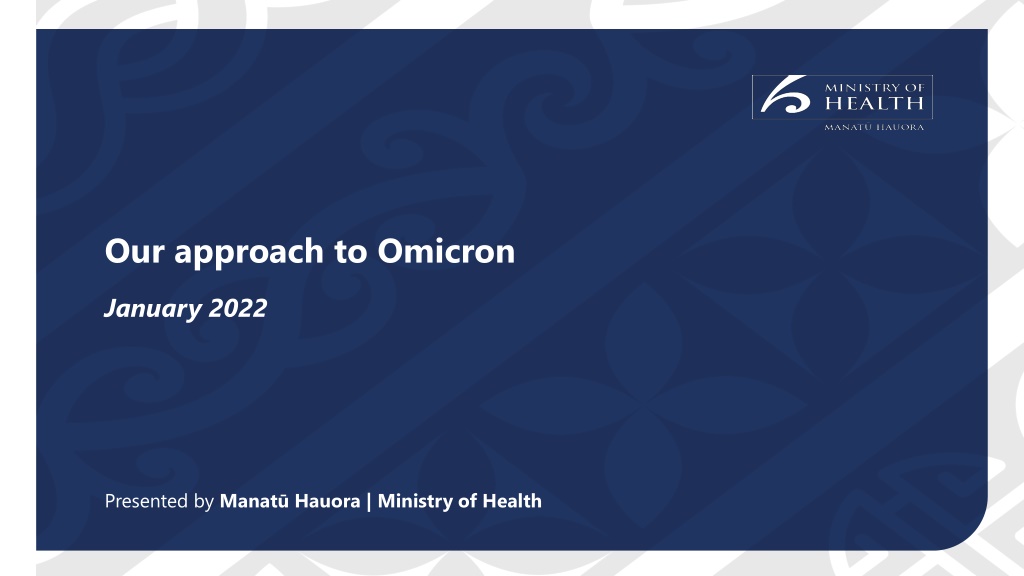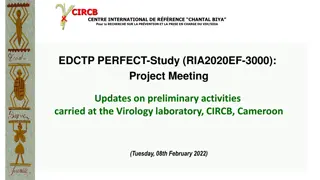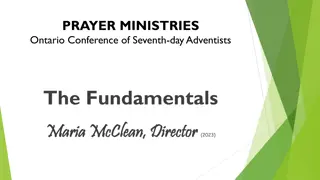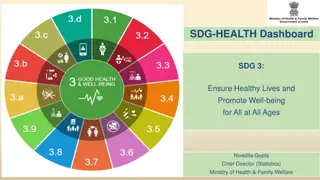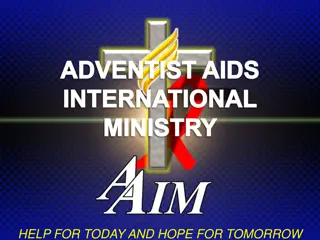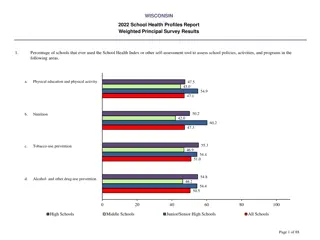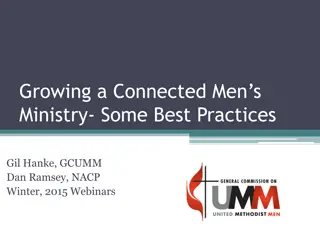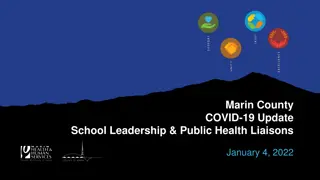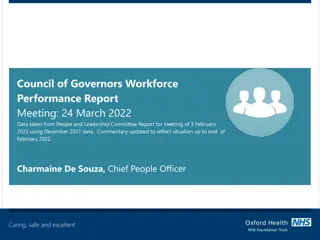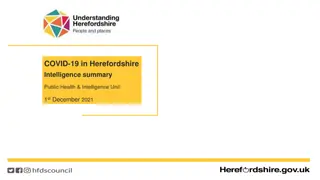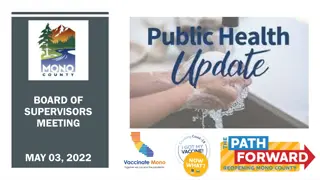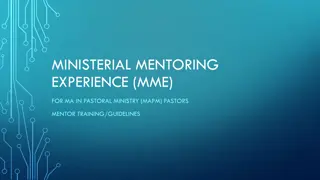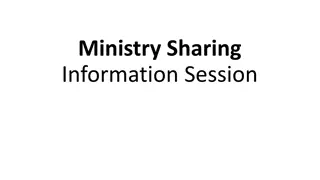Approach to Omicron: January 2022 Insights from Ministry of Health
Presented by Manatū Hauora (Ministry of Health), this report discusses the current Omicron situation in New Zealand and globally. It addresses the rise in border returnee cases, the shift to a Red setting, and international Omicron trends. Priorities for response include Rapid Antigen Testing, mask usage, and vaccination strategies. Modelling scenarios by Te Pūnaha Matatini inform planning, with projections based on varying assumptions and immunity levels.
Download Presentation

Please find below an Image/Link to download the presentation.
The content on the website is provided AS IS for your information and personal use only. It may not be sold, licensed, or shared on other websites without obtaining consent from the author. Download presentation by click this link. If you encounter any issues during the download, it is possible that the publisher has removed the file from their server.
E N D
Presentation Transcript
Our approach to Omicron January 2022 Presented by Manat Hauora | Ministry of Health
Setting the scene our domestic situation The community Delta outbreak is on its tail end, however Omicron cases amongst border returnees have increased substantially. Border returnee cases have risen from around 20 cases detected fortnightly to 513 cases detected in the last 2 weeks. Almost all returnee cases have the Omicron variant. The Prime Minister announced that all of Aotearoa would move to Red setting on Sunday 23 January 2022, in response to the January Omicron cluster.
Setting the scene the international situation Daily reported COVID-19 cases globally are surging to record levels since December 2021. 3.1 million cases reported daily, 21 million cases reported in the past week. 7,797 global deaths reported daily. Omicron is the predominant variant in at least 60 countries worldwide. Omicron appears to reach an infection peak 3 4 weeks after it becomes the dominant strain (UK, approx. 24 days, US approx. 28 days). While hospitalisations increase during Omicron surges, case hospitalisation rates are markedly lower than in previous outbreaks.
Setting the scene some top of mind priorities We are focused on some of the current priorities to support our Omicron response, including: Use of Rapid Antigen Testing (RATs) Use of masks and face coverings Vaccination; issues under further consideration Boosters for 12-17 year olds Shortening the interval for receiving boosters Shortening the interval between doses 5-11 year olds
Modelling scenarios inform our planning and response for Omicron The Te P naha Matatini COVID-19 modelling group (Sean Hendy, Michael Plank) are developing several scenarios for Omicron in New Zealand. Preliminary results are outlined below. Assumptions Preliminary results Homogenous mixing of the population of New Zealand within age bands this likely models more efficient transmission due to contacts than occurs in practice. Peak daily hospital admission Peak daily reported cases Peak hospital bed occupancy Scenario All models account for waning immunity. Community transmission with 500 infections in the community in the week before 1 February. Low ~6,000 ~200 ~750 90% of adults are boosted as they become eligible. Medium ~17,500 ~500 ~2,000 Changes to CPF or other measures in response to increasing epidemic curve not considered. High ~25,000 ~800 ~3,250 Doubling time of 3.5 days for all models. The effective R (Reff) and generation interval, GI, (time between case and contact s infections) are varied. Notes Vaccine effectiveness follows preliminary data observed in UK for 2 and 3 doses. In general, Omicron peaks occur within 2-3 months. Scenarios There is always a large degree of uncertainty based on large assumptions made in modelling. 1. 2. 3. Low: Reff=2.2, GI=3.3 days Baseline/Medium: Reff=2.6, GI=3.3 days High: Reff=3.4, GI=5 days (Note: similar assumptions to Delta) Results are subject to change as Te P naha Matatini are finalising models this week.
Phase One Phase 1 Operational Response Testing Current testing parameters continue. PCR testing for symptomatic and close contacts. Cases identified via positive PCR. Cases isolate for 14 days. Case investigation and contact tracing Situation: There are some cases in the community, but we continue to stamp it out Contacts actively managed through NCTS and PHUs. Contacts isolate for 10 days. PHUs focus on complex cases and medium-high risk settings. Some cases use self service tools such as online contact forms. Health care Clinical care by primary care teams and support by Care Coordination Hubs. Most cases supported to isolate at home.
Phase Two Phase 2 Operational Response RATS may be used in addition to PCR testing for symptomatic people and close contacts. Test to return if needed for asymptomatic healthcare and critical workforce who are close contacts using RATs. Testing Situation: Cases have spread in the community so we need to minimise and slow further spread and assist our vulnerable communities PCR to confirm diagnosis if positive RAT. Cases identified via positive PCR. Cases isolate for 10 days. Case investigation and contact tracing Contacts actively managed through NCTS and PHUs. Contacts isolate for 7 days. Increased use of digital pathways e.g. notification via text, self investigation web based tool. PHUs focus on high priority cases and medium-high risk settings. Cases using self service where possible. Health care Clinical care by primary care teams focussing on people who need ongoing clinical care. Cases supported to isolate at home.
Phase Three Phase 3 Operational Response Focus PCR testing on priority populations testing priority populations and critical workforces. RATS available at GPs, pharmacies, Community Testing Centres or workplaces for symptomatic people or critical workers. Situation: There are thousands of cases per day: most people will self-manage and health and social services focus on families and communities that have the highest needs Testing Symptomatic or priority populations may use a RAT for diagnosis Test to return for asymptomatic healthcare and critical workforce who are close contacts using RAT. Cases identified via positive PCR, RATs or symptoms, 10 days isolation. Case investigation and contact tracing Contacts automatically notified from online self-investigation by cases and option for cases to self-notify contacts, 7 days isolation. PHUs focus on outbreak management and very high risk settings with support from NCIS. Majority of positive cases self-manage. Health care Clinical care and welfare support focusses on those with high needs.
Equity first who is most at risk? Equitable outcomes, particularly for our disadvantaged populations, are essential to every pillar of our Omicron response. Pooroutcomes Higher transmission Young adults age 18-35 People at large/high density indoor events People in temporary housing, overcrowded housing, poor ventilation People in prisons Healthcare staff People who work in frontline services like transport operators and food and beverage workers People over 60 years of age Pregnant people People with other conditions such as cardiovascular, respiratory, diabetes, inflammatory conditions, immunodeficient states, autoimmune diseases, and mental health issues People with poor access to healthcare and prevention services Casual/contract workers People in aged residential care facilities and hospitals Unvaccinated people M ori and Pacific communities Disabled people People with drug/alcohol addiction People who experience high levels of material deprivation
Health system preparedness for Omicron We re rapidly adjusting our approach and response to the new challenges presented by Omicron. Health System Preparedness what we ve changed in response to Omicron Care in the Community what we ve changed in response to Omicron DHB preparedness and contingency planning have been reviewed considering Omicron scenarios. Providing more options for self-service to enable the health system to focus on COVID-positive individuals and wh nau with high clinical need. Workforce planning continues to ensure that service delivery can be maintained under Omicron scenarios. Planning scaling up activities with our Care in the Community central agencies to allow the whole system to jointly respond to Omicron. Health regional coordination in place to coordinate and prioritise community, primary and hospital level care. Risk stratification to identify at risk individuals and wh nau to enable the appropriate level of clinical care and welfare support. COVID-19 therapeutics to support care in the community.
Working with you It is essential we work together closely with you, the sector to implement an effective response to Omicron. 1. Using our existing working groups, advisory groups and clinical advisory groups. 2. Establishing sub-groups. 3. Including Health New Zealand and M ori Health Authority in these groups. We welcome feedback on our approach.
